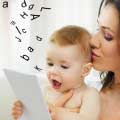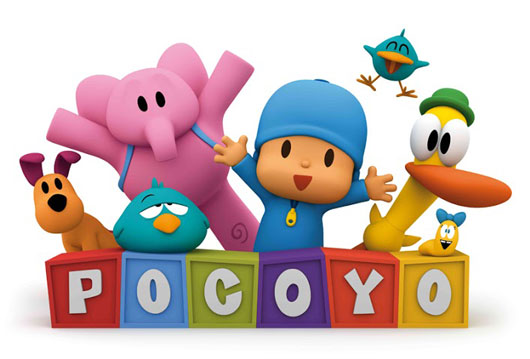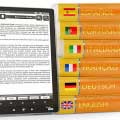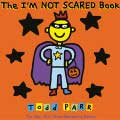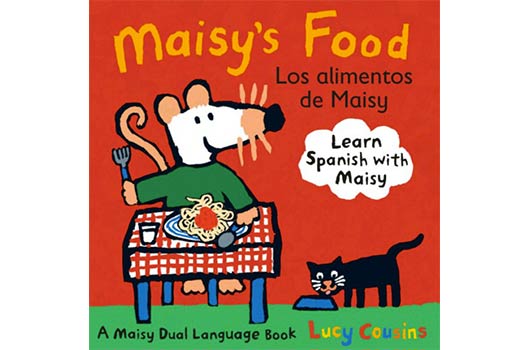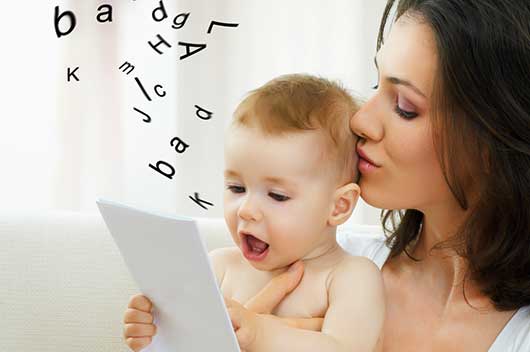
More and more, researchers are concluding that being bilingual, and particularly, becoming bilingual as an infant, has huge benefits on brain development. And while there’s no short or simple explanation for how babies become bilingual, the message is increasingly clear—the sooner infants get exposed to a second language, the better.
Read Related: Bilingual from Birth: Raising My Son in Two Languages
Here is a round-up of key findings of studies of the bilingual brain, along with mounting evidence—as if we needed more proof!—of why you’re doing your kids a huge favor by raising them bilingually:
Grey matter matters: The density of grey matter in the brain is considered a measure of a subject’s intelligence or skill in a particular area. So the denser the grey matter, the higher the IQ or unique talent, say at music or math. Studies have shown that bilingual people have denser grey matter than monolinguals. The sooner the second language was learned, the denser the grey matter, particularly in left part of the brain that controls language.
Younger is better: Bilingual children use parts of the brain that are no longer accessible in later life. The brain’s ability to absorb and comprehend language is sharpest in the first year of life and starts to decrease after 12 months. By the time a child reaches puberty, his ability to learn a language has decreased significantly.
Thinking in two languages: The bilingual brain is constantly making decisions. Even when only one language is being spoken at a time, a bilingual is thinking and processing information in two languages. Because a bilingual’s brain has to work harder at keeping two languages separate, its “executive control system” is trained to focus attention on what’s important and ignores distraction. And that helps mental acuity in all its facets, not just in language.
Increased brain fitness: All that processing and decision-making a bilingual must do, 24 hours a day, means they have a level of mental fitness that studies suggest, outpaces their monolingual peers. Bilingual children, when given non language-based tests of cognitive awareness, routinely score higher than monolingual children.
A 2009 paper published by ASHA, the American Speech-Language-Hearing Association, pointed out these major differences in the linguistic and cognitive functions of bilingual versus monolingual children, all of which point to distinct advantages for bilingual kids:
Linguistics
- Bilingual children develop an earlier understanding of relationships between objects. For example, they are quicker to comprehend that shirts, pants and socks are all clothing.
- Bilingual adults are better than monolingual adults at learning new words.
- Linguistic input activates both languages in bilinguals; when bilinguals hear or read words in one language, the other language is activated in their brain as well. So for example, when a bilingual child reads the word “white,” he’s also registering “blanco.”
Cognitive function
- Bilinguals may be able to inhibit irrelevant verbal and nonverbal information more easily than monolinguals. In other words, they can filter out the verbal and nonverbal “white noise” and focus on essential information better than their monolingual peers. This aids in problem solving and decision-making.
- Bilinguals on average develop dementia later in life than do their monolingual counterparts.
- Bilingual children have been found to exhibit superior performance in creative problem-solving, also known as divergent thinking.
Science is providing us with a host of reasons to be excited and enthusiastic about raising our children bilingual. By doing so, we’re not just providing them with increased opportunities and easier communication. We’re helping their brains develop in ways that only learning a second language from birth can do. So the sooner we start teaching our littlest ones to listen, speak and read in two languages, the better!
[Mamiverse’s Bilingual Plus is an online channel devoted to bringing parents and educators the bilingual learning tools they need in the form of digital picture books, sing-alongs, and free curriculum-based family activities.]

